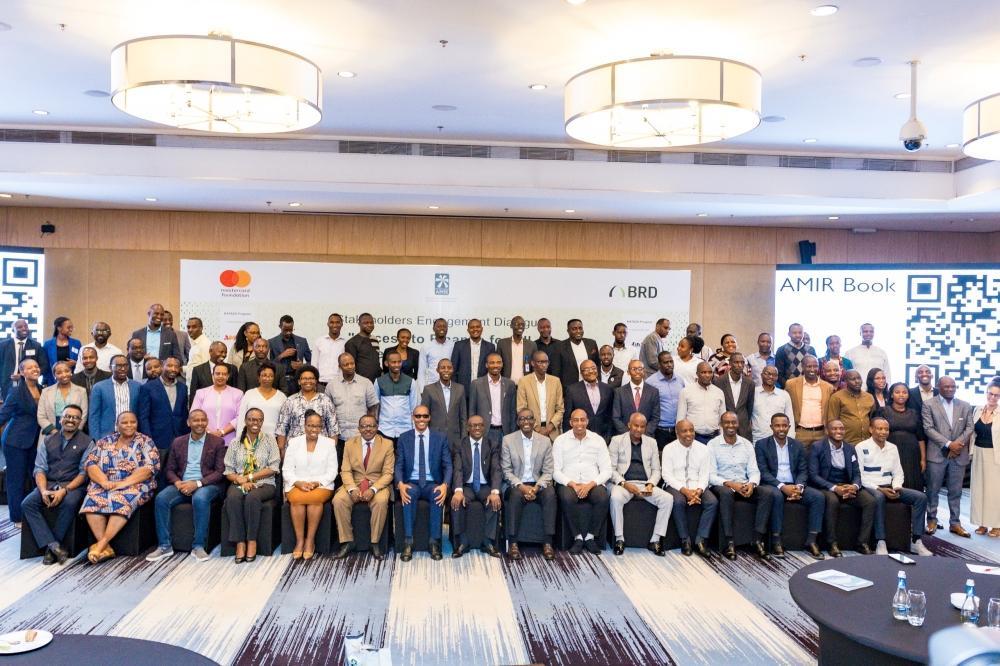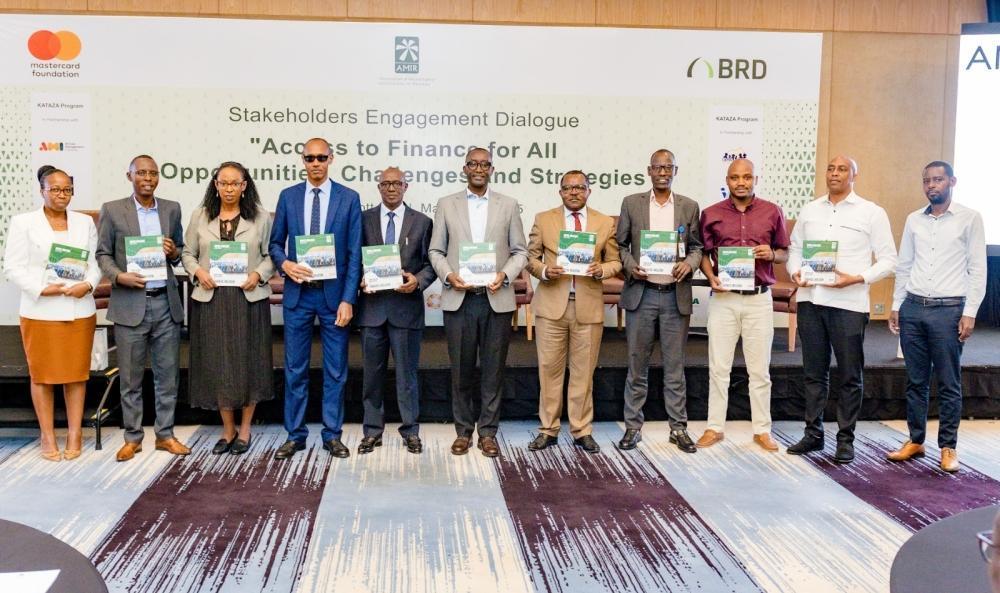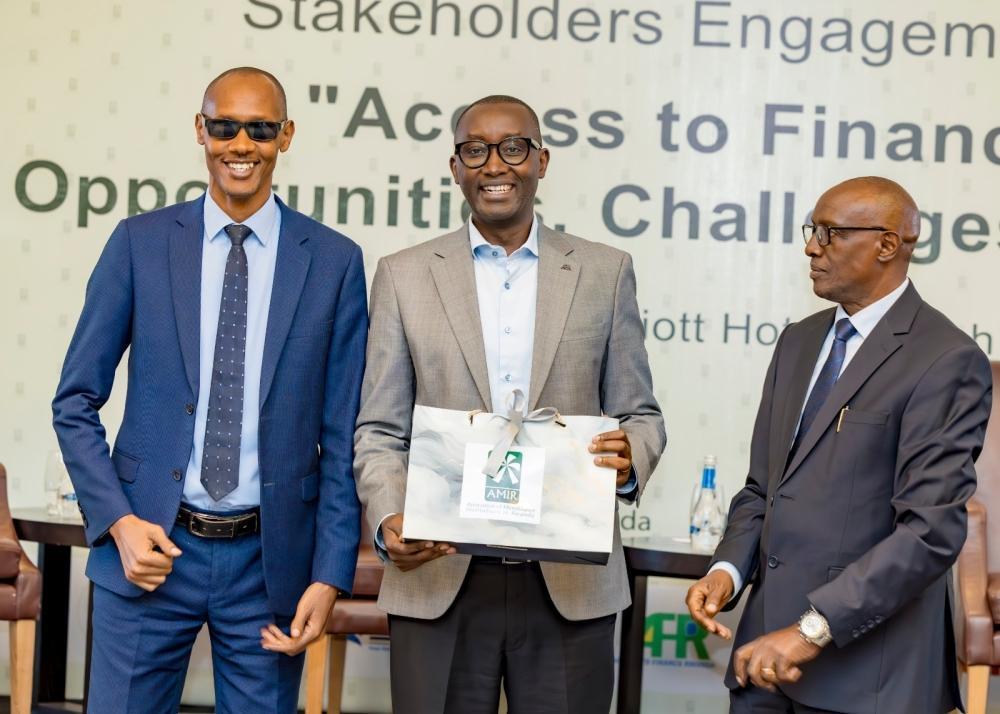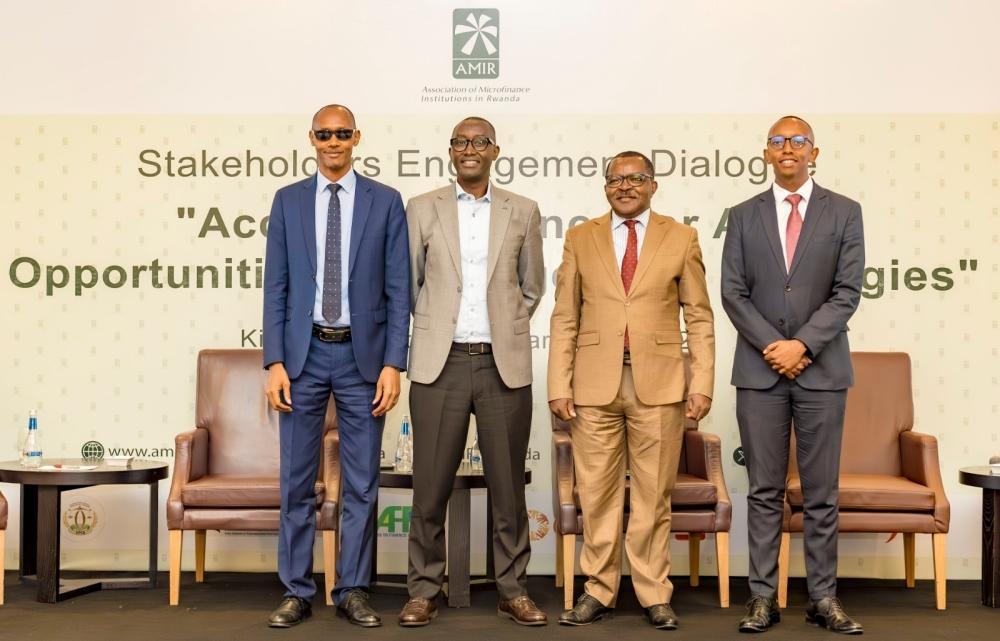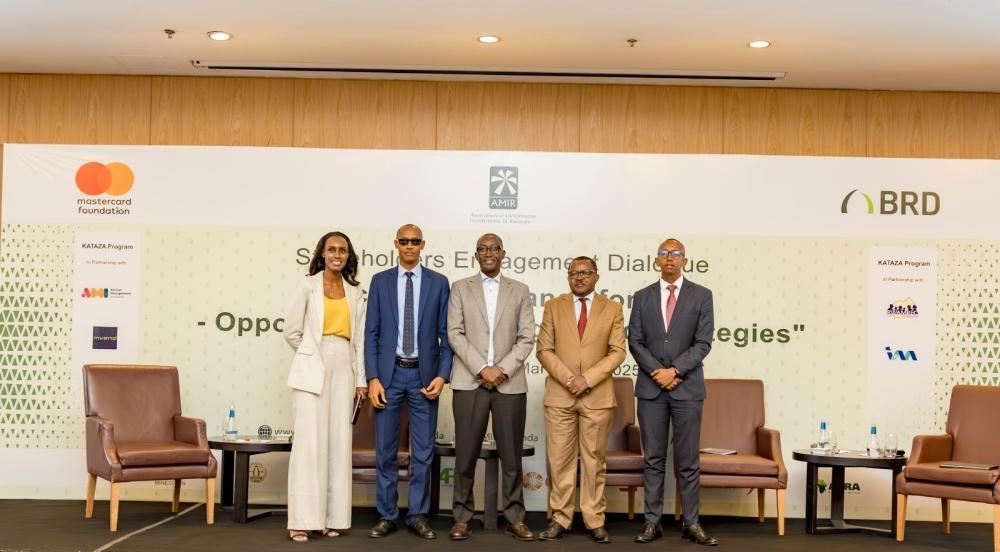Africa-Press – Rwanda. The microfinance sector is set to benefit from the establishment of a Microfinance Liquidity Fund by the end of 2025.
The initiative, spearheaded by the Association of Microfinance Institutions in Rwanda (AMIR), aims to provide microfinance institutions (MFIs) with access to low-cost liquidity, enabling them to offer single-digit interest rate loans.
Single-digit interest rates, ranging from 1 per cent to 9 per cent annually, significantly reduce borrowing costs compared to double-digit rates, fostering greater affordability for low-income borrowers and small businesses.
Representing over 90 per cent of Rwanda’s microfinance sector and encompassing 342 licensed MFIs and Savings and Credit Cooperatives (SACCOs), AMIR is championing the fund to bolster the financial stability of institutions serving underbanked communities.
The fund will act as a buffer against financial shocks and ensure the uninterrupted provision of affordable credit to marginalised populations.
According to Jackson Kwikiriza, AMIR’s Executive Director, this initiative is a critical step toward expanding financial access and empowering Rwanda’s micro-entrepreneurs.
MFIs often encounter liquidity challenges due to the irregular incomes of their borrowers and the size of loans they offer.
With the liquidity fund in place, MFIs are expected to get much-needed liquidity for operational costs or loan disbursement, mitigating the risk of cash flow shortages that could lead to defaults or limited lending capabilities.
Additionally, MFI officials say the fund could potentially offer short-term financial assistance during unexpected stresses, acting as a buffer against unforeseen challenges.
Similar liquidity funds in other countries are often supported by government bodies, international development organisations, private investors, or banks, all interested in promoting financial inclusion and supporting microfinance.
Discussions regarding the proposed fund took place during a meeting on financial access, challenges, and strategies on March 14, 2025.
Kwikiriza highlighted that high interest rates are a result of liquidity shortages in MFIs and SACCOs, exacerbated by a low number of savers within these institutions.
“Savings should begin within associations and cooperatives, which can then deposit in MFIs. The Microfinance Liquidity Fund will help bridge the liquidity gap in microfinance institutions,” he said.
Despite 96 per cent of Rwanda’s population having access to financial services, AMIR reports a significant number of dormant accounts in MFIs and SACCOs, indicating that many individuals do not actively save or apply for loans, thereby limiting liquidity in these financial entities.
Kwikiriza noted that the establishment of the liquidity fund is being spearheaded by the microfinance institutions association in collaboration with Access to Finance Rwanda.
He indicated that liquidity could derive from various sources, including investors and organisations focused on reducing interest rates.
“This initiative is timely, as some MFIs currently acquire liquidity at high costs, particularly by borrowing in dollars from abroad, which compels them to offer loans at elevated interest rates,” he explained. “High interest rates deter potential borrowers.”
More efforts underway
Beyond the proposed fund, additional initiatives are underway to provide loans at single-digit interest rates targeted at youth, young women, and people with disabilities, particularly in agriculture, tourism, and hospitality.
One such initiative, the Serve Project, emphasises agricultural financing and collateral opportunities.
The Rwanda Development Bank (BRD), AMIR, and other consortium members have also launched the KATAZA Project to reach district levels.
“Microfinance institutions need to secure liquidity from BRD at lower interest rates and then offer loans to consumers at single-digit rates,” Kwikiriza said.
These projects aim to create 100,000 jobs.
Vincent Munyeshyaka, CEO of the Business Development Fund (BDF), pointed out the scarcity of collateral funds to guarantee loans.
“We invest Rwf 16 billion annually in loan guarantee services. With over 7 million people using mobile money, this can facilitate access to financial services and reduce the need to queue at banks,” he stated.
Cyrile Hategekimana, Director General of the Banking and Non-Banking Sector at the Ministry of Finance and Economic Planning, said good progress has been made in promoting financial access.
However, he noted that the use of formal financial services remains low due to a lack of product knowledge and limited services that cater to customer needs.
“Rural communities are not fully utilising financial services, and there is a pressing need for strategies that address the challenges of youth and SMEs. The cost of financial services remains high, which necessitates innovation and confidence-building measures to enhance affordability for business growth,” he said.
For More News And Analysis About Rwanda Follow Africa-Press

